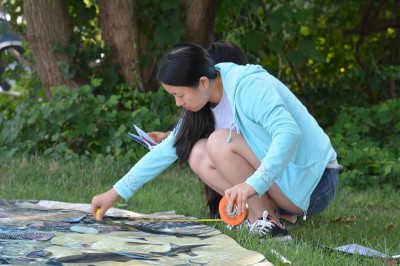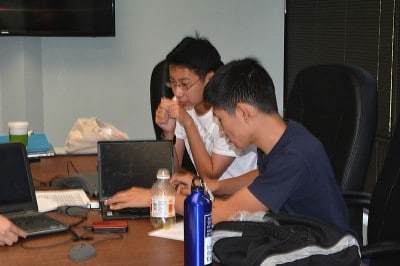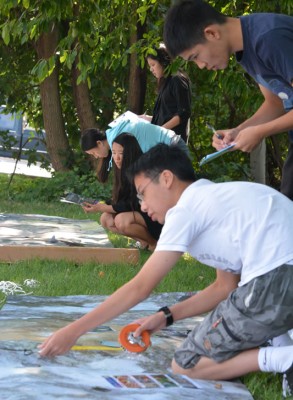How do we inspire students to be the future leaders and stewards of our oceans? One way is to hold an annual academic marine science competition that tests high school students on their knowledge of the marine sciences. That is exactly what our partners are doing at the National Ocean Sciences Bowl® (NOSB), a program of the Consortium for Ocean Leadership based in Washington, D.C.
2014 NOSB Marine Science Competition
NOSB inspires students across the US to take a closer look at ocean issues through engaging them in scientific research and mathematics. This will help them to develop critical thinking and real world skills that will help foster the education of our future ocean stewards.
This year’s marine science competition was themed “Ocean Acidification,” a topic that hits close to home for the Foundation. (Learn more.) In all, there were approximately 300 teams that competed in this year’s competition. Numerous Regional Competitions were held, narrowing down the competition to 22 teams. These winners competed in the Nationals Finals Competition in Seattle, Washington. The top three teams were:
1st Place: Boise High School – Boise, Idaho
2nd Place: Arcadia High School – Arcadia, California (see photo above)
3rd Place: Juneau-Douglas High School – Juneau, Alaska
These teams had their choice of prizes, including GoPro video cameras and all-expense paid trips to Northern New England and the Washington, D.C. and Maryland area to conduct hands-on ocean science activities and visit Marine Science education facilities.
We were thrilled when NOSB asked if we would host the second place team that chose Washington, D.C./Maryland trip as their prize.
Since we couldn’t go to a coral reef, we decided to bring the coral reef to them. The team participated in Foundation’s Canvassing the Reef activity. Prior to the activity, students listened to a presentation about the different indicators of reef health. Then, students learned how to conduct three different surveys (coral, benthic, and fish) just like our scientists do in the field.
|
|
|
Each group used a 1 m x 30 m custom printed reef photo to conduct their surveys. Cutouts of different reef organisms were placed on the canvas. There were two different transects – one was of a coral in good health and the other poor health.
Each group collected a variety of data for each survey. For instance, during the fish survey, students measured and identified the different fish that were present within the transect area. After they completed the activity, the students started to analyze a data set from each reef using Excel.

Kathy commented, “The activity was great for seeing how raw data is collected and can actually be used.”
The students were thrilled to see the results unravel and tell a story about the health of their coral reef. They were also excited to be learning about future scientific opportunities that they may not have considered before.

Evan stated, “The presentation really opened my eyes to research options in the future.” Similarly, Kathy said, “The presentation really piqued my interest in doing scuba diving and field work.”
Opportunities such as these are what start to inspire and engage the minds of our youth to become stewards of the ocean.
Photos by Alison Barrat and Amy Heemsoth

